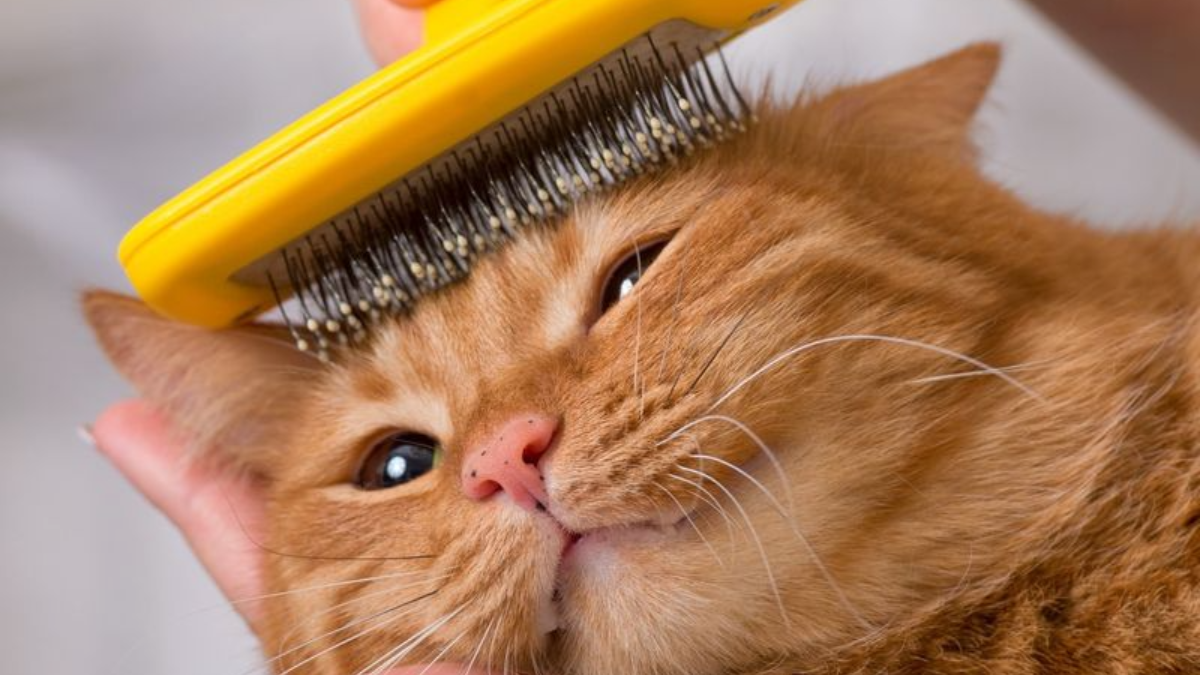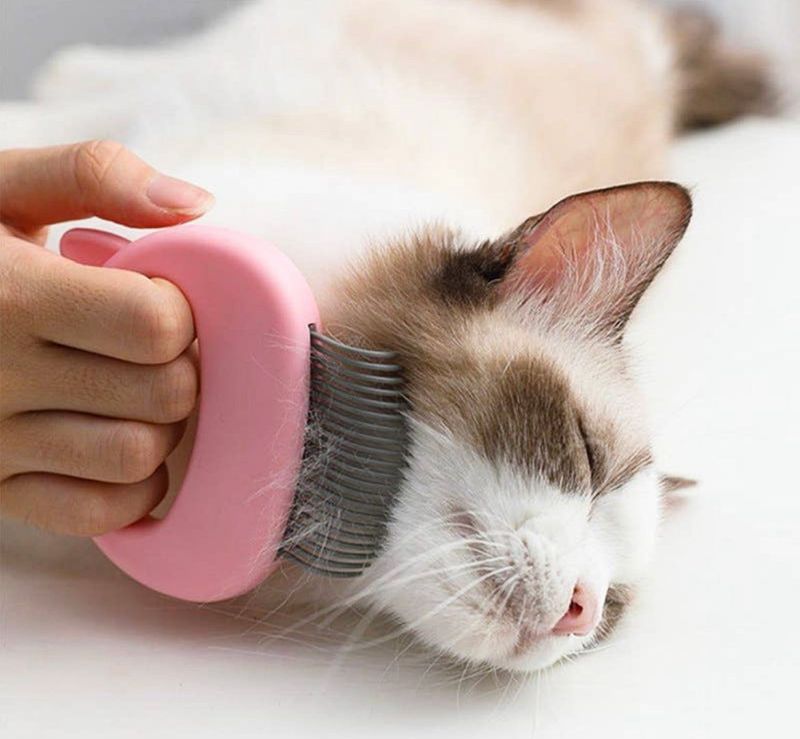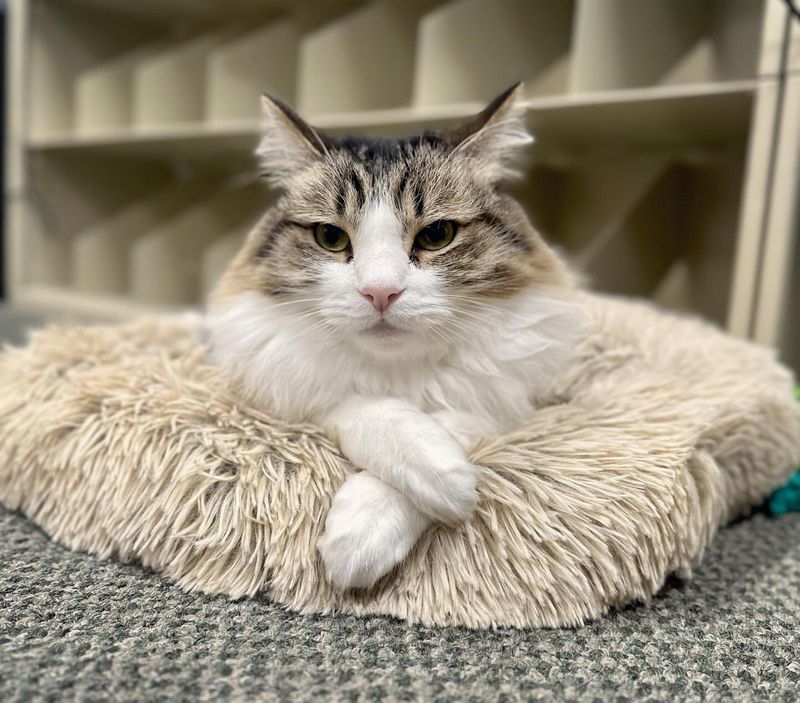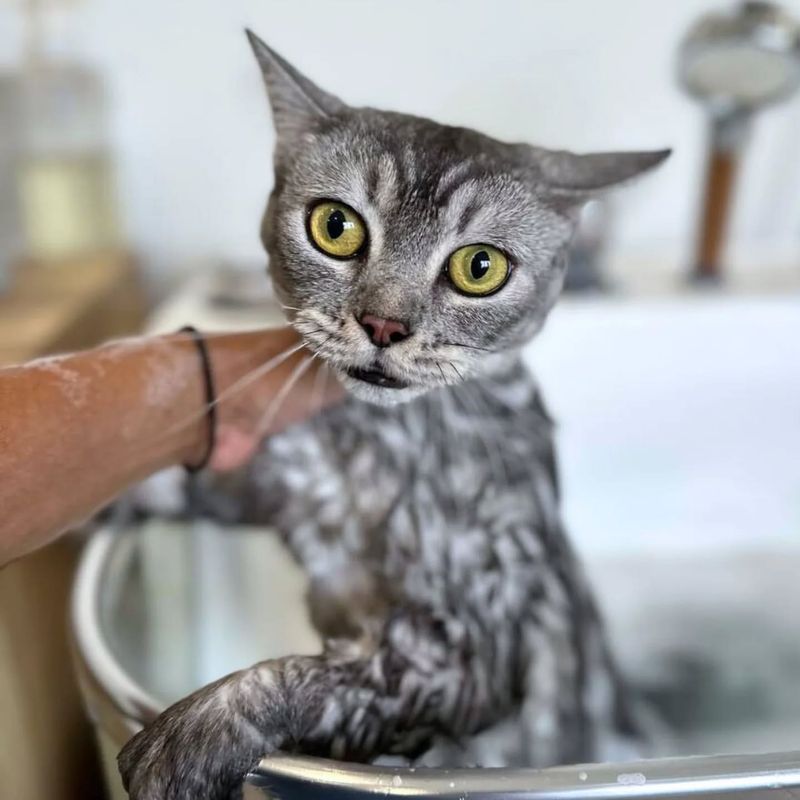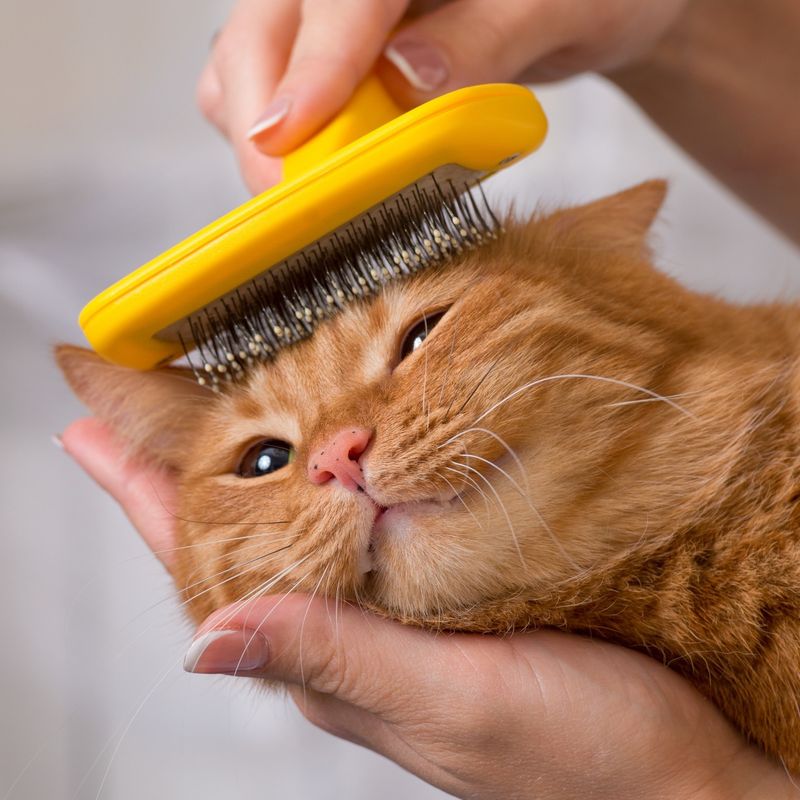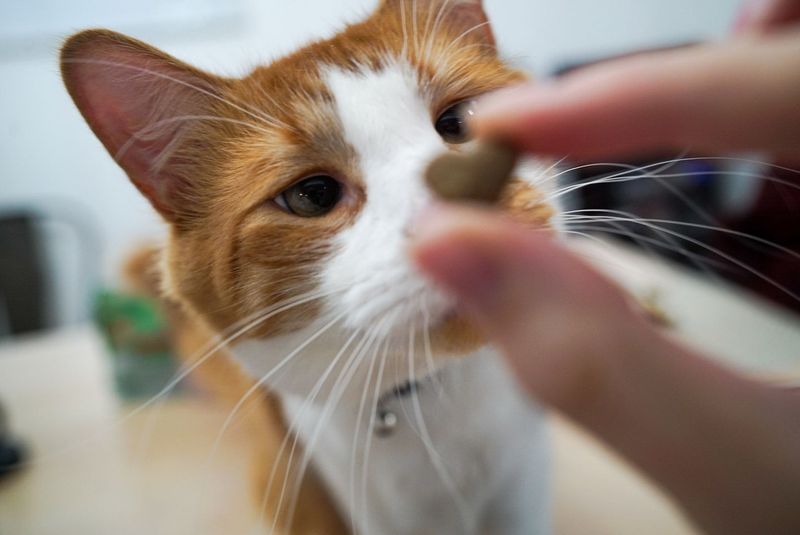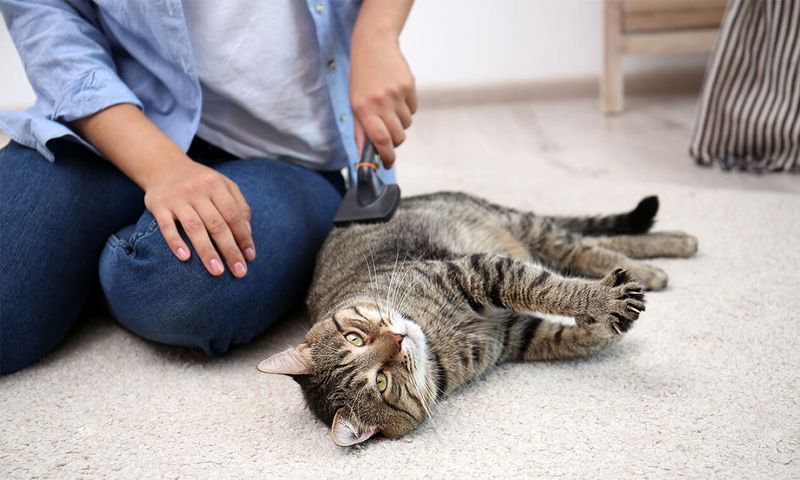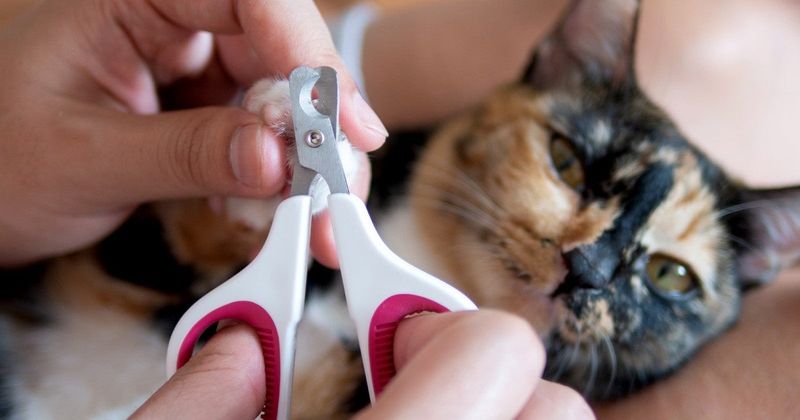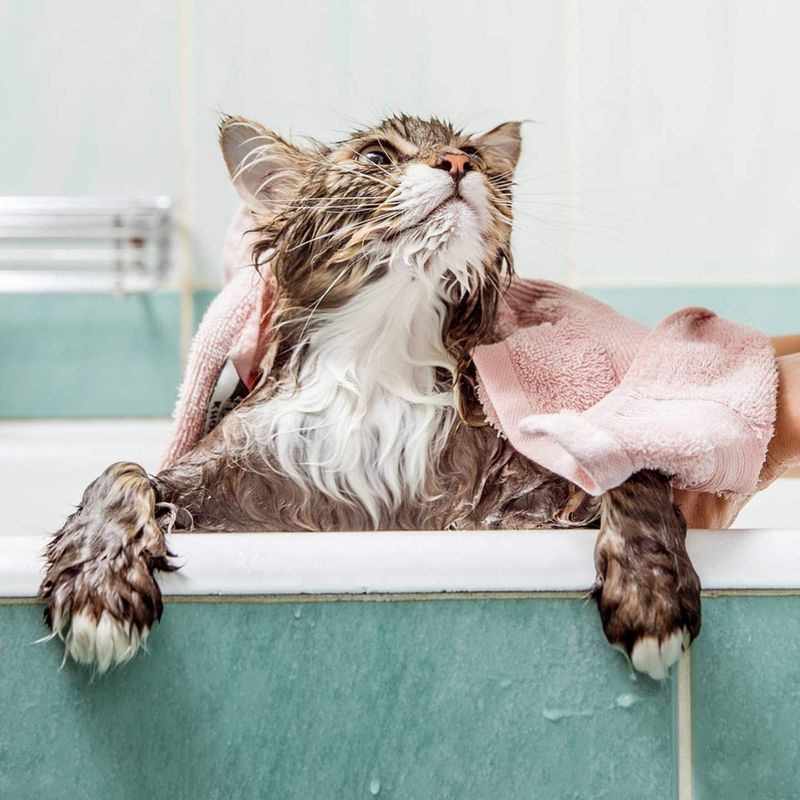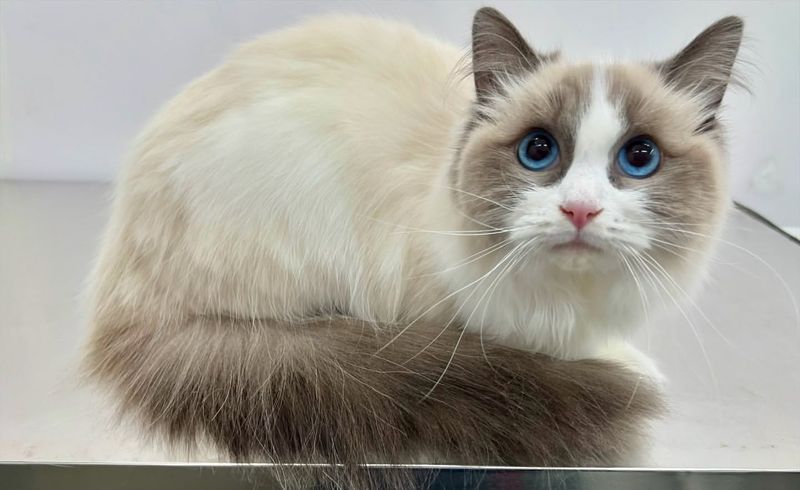📖 Table of Content:
- 1. Choose the Right Grooming Tools
- 2. Create a Calm Environment
- 3. Understand Your Cat’s Body Language
- 4. Start Slowly and Gradually
- 5. Use Gentle and Consistent Movements
- 6. Incorporate Treats and Rewards
- 7. Brush Your Cat Regularly
- 8. Trim Your Cat’s Nails
- 9. Bathe Your Cat When Necessary
- 10. Know When to Stop
Grooming your cat might sound like a peaceful bonding activity, but let’s be honest—sometimes it feels more like a high-stakes wrestling match. One wrong move, and you’re dodging claws or explaining suspicious bite marks to your friends.
But fear not, fellow feline fans! Grooming doesn’t have to be a battle of wills (or skills). With the right approach, some clever tricks, and a hefty dose of patience, you can keep your cat looking fabulous without risking life and limb.
In this guide, we’ll walk you through practical tips for trimming claws, brushing fur, and even tackling the dreaded bath—all while keeping your cat calm and your skin intact. Ready to outsmart your whiskered warrior?
1. Choose the Right Grooming Tools
Selecting the right grooming tools is key to a stress-free grooming session. Opt for a brush that suits your cat’s fur type, such as a slicker brush for long-haired breeds or a bristle brush for short-haired cats. Nail clippers designed specifically for pets are essential to prevent injury and ensure a clean cut.
Another great tool is a grooming glove, which allows you to pet your cat while removing loose hair. This can be particularly useful for cats that are not fond of traditional brushes.
Before purchasing, read reviews or consult a professional groomer to ensure the products are safe and effective. Investing in quality tools will not only make grooming more comfortable for your cat but also more efficient and enjoyable for you.
2. Create a Calm Environment
Creating a calm environment is crucial for a successful grooming session. Start by choosing a quiet room in your home where your cat feels comfortable. Minimize noise and distractions, such as loud televisions or other pets, to help your cat relax.
Consider playing soft music or using a white noise machine to create a soothing atmosphere. Some cat owners find that pheromone sprays or diffusers can also help calm anxious cats.
Before you begin grooming, spend a few minutes petting your cat to help them feel at ease. When your cat associates the grooming area with relaxation, they are less likely to resist or become agitated during the process.
3. Understand Your Cat’s Body Language
Understanding your cat’s body language is vital for a smooth grooming process. Pay attention to signs of discomfort or stress, such as flattened ears, twitching tails, or hissing. Recognizing these signals can help you adjust your approach and prevent escalation.
Before grooming, take time to observe your cat’s natural behavior and preferences. Some cats enjoy being brushed on certain areas more than others, and identifying these spots can make the session more enjoyable for both of you.
Use treats or gentle praise to reward your cat when they are calm and cooperative. Positive reinforcement helps build trust and reinforces good behavior, making future grooming sessions more manageable.
4. Start Slowly and Gradually
Starting slowly and gradually can make a big difference in how your cat responds to grooming. Begin by introducing the grooming tools to your cat without using them, allowing your pet to sniff and become familiar with them.
Once your cat seems comfortable, start with short grooming sessions, focusing on areas they enjoy. Gradually increase the duration and complexity of the sessions as your cat becomes more accustomed to the routine.
If your cat shows signs of stress, pause and offer a favorite treat or toy to redirect their attention. Patience is key; over time, your cat will likely become more tolerant, making grooming a positive and pleasant experience.
5. Use Gentle and Consistent Movements
Using gentle and consistent movements during grooming helps avoid unnecessary stress or discomfort for your cat. Always start with light strokes, gradually increasing pressure as needed, especially in areas prone to tangles or mats.
Consistency in your grooming technique not only relaxes your cat but also builds a routine they can anticipate. This predictability helps reduce fear and anxiety, making future sessions more relaxed and enjoyable.
Pay attention to your cat’s reactions, and adjust your technique accordingly. If your cat seems uncomfortable, try changing the angle of your brush or using a different tool. Keeping the experience positive will encourage your cat to remain calm and cooperative.
6. Incorporate Treats and Rewards
Incorporating treats and rewards into your grooming routine can significantly improve your cat’s cooperation and comfort. Begin by offering a small treat before starting to create a positive association with grooming.
During the session, use treats to reward your cat for staying calm or allowing you to groom specific areas. This encouragement not only reinforces good behavior but also makes the experience more enjoyable for your pet.
Consistently using rewards can turn grooming into a bonding activity rather than a chore. Over time, your cat may eagerly anticipate grooming sessions, knowing they will receive their favorite treats. This approach fosters a trusting relationship and ensures a stress-free grooming experience.
7. Brush Your Cat Regularly
Ever notice how cats seem to have a regal air about them? Regular brushing is your cat’s secret to maintaining that majestic look. It reduces shedding and prevents matting, making your feline feel pampered. Start with a soft-bristled brush, moving in gentle strokes.
Cats respond well to rhythmic brushing, almost like a soothing massage. This ritual not only enhances their coat’s shine but also strengthens your bond.
Plus, it’s a wonderful way to check for any hidden ticks or skin issues. Remember, a relaxed cat makes for a harmonious home!
8. Trim Your Cat’s Nails
Trimming nails might sound daunting, but it’s essential for your cat’s comfort and your skin’s safety. Cats often scratch to mark territory or stretch, but overgrown nails can lead to accidental scratches. Begin by gently pressing your cat’s paw to extend the nail, then trim just the sharp tip.
A cat familiar with this routine will often purr in satisfaction. If unsure, consult a vet or a professional groomer.
With patience, you’ll find this task becomes a peaceful moment of care. Embrace this as part of your grooming repertoire!
9. Bathe Your Cat When Necessary
Cats are known for their self-cleaning prowess, but occasionally, a bath becomes necessary. Choose a calm day and use lukewarm water. Using a cat-specific shampoo, gently massage from head to tail. Be mindful to avoid their ears and eyes.
It’s crucial to maintain a calming voice throughout; your soothing tone will reassure them. Dry them thoroughly with a soft towel and offer treats afterward. Bathing can be a bonding experience, transforming your kitty into a fresh, fluffy companion.
Maybe even surprise them with a new toy post-bath!
10. Know When to Stop
Knowing when to stop is crucial to maintain a positive grooming experience. Pay close attention to your cat’s body language and behavior during the session. If your cat becomes agitated, it may be time to pause and let them relax.
Never force your cat to stay if they are showing signs of distress, like growling or trying to escape. Giving them space ensures they don’t associate grooming with negative feelings.
You can always resume the session later when your cat is more receptive. Ending on a positive note, even if it means stopping early, helps build a foundation of trust and ensures future grooming sessions are more successful.
